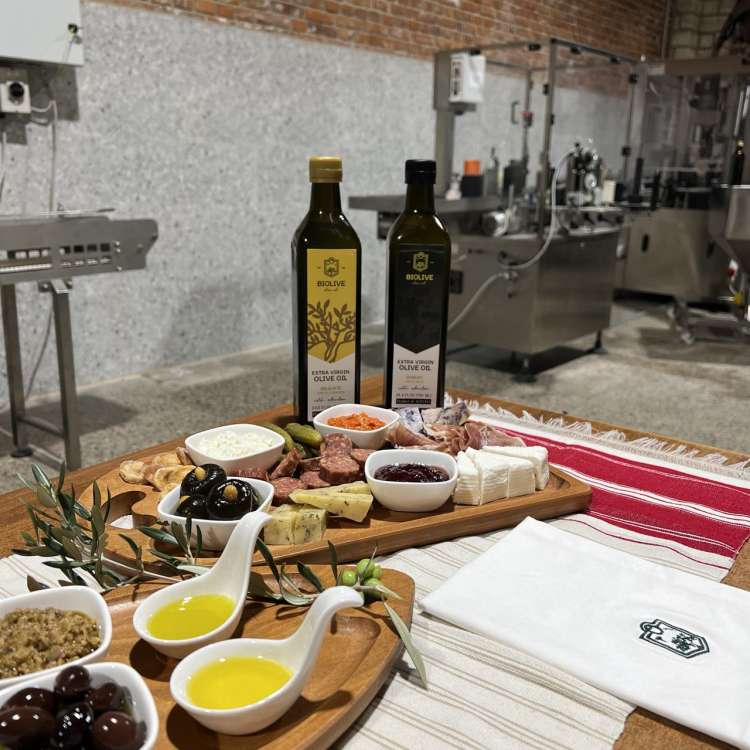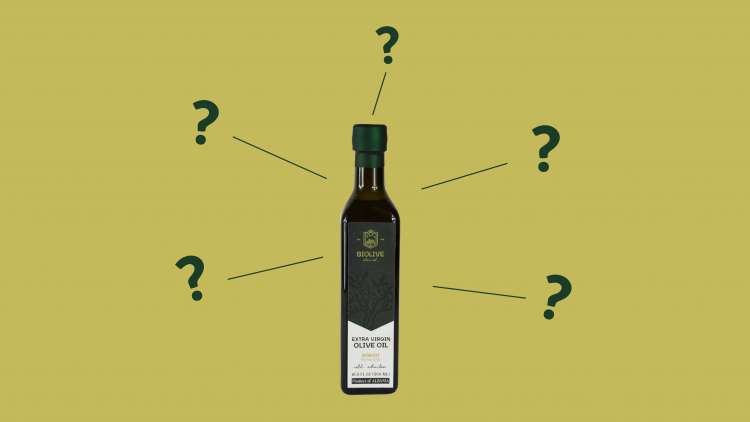Extra virgin olive oil (EVOO) may seem perplexing, but it doesn't have to be. To comprehend why this superior grade of olive oil is so exceptional, you just need to grasp a few fundamental facts. Extra virgin olive oil represents the highest standard of olive oil and is regulated by the most rigorous chemical and sensory criteria.
As a consequence, EVOO offers the most health benefits and possesses the most robust flavor among the nine categories of olive oil. Crafting extra virgin olive oil is also the most challenging process, requiring both chemical and sensory evaluations, which makes it the most costly type of olive oil to produce.
Yet, anyone who has savored a premium-quality EVOO can attest that it is worth all the effort.
See also: The Categories of Olive Oil https://bioliveoil.com/blog/the-categories-of-olive-oil
Understanding what 'extra virgin' really means:
The two primary governing bodies responsible for regulating olive oil quality, the Codex Alimentarius and International Olive Council (IOC), define extra virgin olive oil (EVOO) as possessing excellent flavor and aroma.
To be classified as 'extra virgin,' an olive oil must have a median of defects, with the greatest intensity of one of the 12 olive oil defects, scoring zero, and a median of fruitiness scoring above zero. Additionally, EVOO must have a free fatty acid content expressed as oleic acid of less than 0.8 grams per 100 grams, the lowest of any non-refined olive oil grade. (Refining processes eliminate free fatty acids, resulting in lower levels in refined olive oils.)
Higher values of free fatty acids generally signify that the triglycerides have deteriorated, which can occur due to the use of damaged or diseased fruit, delays in milling, high temperatures, or poor storage conditions. While 0.8 grams per 100 grams is the highest acceptable free fatty acid content in EVOO, premium-quality EVOOs frequently have a free fatty acid content closer to 0.3.
Moreover, the peroxide value per kilogram of EVOO must be less than or equal to 20, with higher peroxide values indicating more oxidation has occurred, and the oil is less likely to be fresh.
Although most governments follow the Codex Alimentarius and IOC standards, California's definition for EVOO is more stringent, allowing for a free fatty acid content expressed as oleic acid of less than 0.5 grams per 100 grams. Nevertheless, the organoleptic requirements remain the same.
Taste the difference:
Extra virgin olive oil is judged not only by its chemical parameters, but also by three positive attributes and the absence of five common defects. These attributes - fruitiness, bitterness, and pungency - are evaluated by trained tasters using a linear scale to measure intensity.
Fruitiness is determined by the oil's aroma and taste, and can be described as fresh, green, mature, or ripe. Bitterness, though less desired in most foods, indicates the use of fresh olives and is associated with the presence of polyphenols. Pungency, a stinging sensation in the throat, is linked to the polyphenol oleocanthal and is an acquired taste.
Producers must balance these attributes to create high-quality extra virgin olive oil. Negative attributes, such as frostbitten, fusty, musty, rancid, and winey, are identified by tasting panels and indicate that the oil cannot be graded as 'extra virgin.'
Frostbitten olives give the oil a taste of wet wood, while fustiness and mustiness result from improper storage and the growth of fungi or yeast. Rancidity occurs when the oil is oxidized due to prolonged exposure to air, heat, or light. Winey oil has a vinegary or sour taste and results from the fermentation of olive residue due to unclean equipment.
In summary, a high-quality extra virgin olive oil must balance positive attributes and avoid common defects, and can only be determined through careful evaluation by trained tasters.
See also: Recognizing Olive Oil Defects https://bioliveoil.com/blog/recognizing-olive-oil-defects
How extra virgin olive oil is made:
The process of making extra virgin olive oil is a purely mechanical one that excludes any heat or chemical solvents.
To begin, farmers harvest olives and immediately transport them to the mill. Harvesting at night is a popular option for farmers in hotter regions to maintain the EVOO's polyphenols.
Upon arrival at the mill, olives are stripped of their leaves and washed before being ground into a paste using either a blade, disc or hammer mill. Traditional stone mills are still used in some places but are less efficient.
Next, the olive paste is stirred slowly in a malaxer to allow the oil droplets to accumulate and develop the oil's unique flavors and aromas.
Afterward, the paste goes to a centrifuge where the oil is separated from the water and pomace, solid waste comprising stems and pits. In the past, this separation was done using a hydraulic press, hence the term cold-pressed.
Some mills opt for a second centrifuging to remove the last of the water and pomace particles. The oil is then poured out, filtered, and stored in stainless steel tanks under inert gas.
Extra virgin olive oil is graded based on its adherence to the aforementioned chemical and organoleptic standards.
The Health Benefits of Extra Virgin Olive Oil: Exploring the Power of Polyphenols and Monounsaturated Fatty Acids
Extra virgin olive oil is renowned for its health benefits, thanks to its unique composition of monounsaturated fatty acids, polyphenols, and vitamin E.
While other oils may contain similar fatty acids, it is the abundance of polyphenols in EVOO that sets it apart and provides its impressive health benefits. Virgin and refined olive oils, on the other hand, do not have the same level of polyphenols.
The polyphenols in EVOO have been linked to a range of health benefits, including reducing the risk of cardiovascular disease and diabetes, preventing cancer, and even addressing neurodegenerative diseases. Additionally, EVOO has been associated with improved skin care and dental hygiene, and may be useful in treating a range of other diseases related to inflammation. In fact, scientists in Spain are exploring the use of supplements made from EVOO polyphenols as a potential treatment for Covid-19.
These health benefits have been established through countless peer-reviewed academic studies conducted over the past six decades, cementing EVOO's reputation as a powerful and healthy food.
Extra Virgin Olive Oil: The Best Alternative for Cooking
Extra virgin olive oil is not only healthy but also adds exquisite flavor to dishes, making it an essential ingredient in every cook's kitchen. Michelin-star chefs also agree with this statement.
Beyond using it for dipping bread or dressing salads, extra virgin olive oil has a variety of culinary applications. It has a high smoke point, making it suitable for baking, grilling, sautéing, and frying.
While it's primarily known as a finishing oil, extra virgin olive oil is an excellent option for making stews and soups too. However, not all extra virgin olive oils are created equal, so it's crucial to select the right oil for each dish.
Depending on the fruitiness of the oil, cooks can choose from delicate, medium, or robust oil for their recipes. Some recipes may even specify the type of extra virgin olive oil to use.
For instance, Our ROBUST Extra Virgin Olive oil, with its early-harvested olives, retains the maximum flavor and nutritional value, resulting in a low-acidity, rich and bold oil that elevates any dish. On the other hand, Our DELICATE Olive Oil has a unique flavor profile that enhances the dish's flavor without overpowering it.
Sources: Healthline, North American Olive Oil Association, Olive Oil Times


